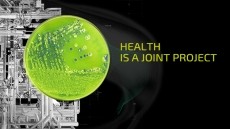FDA warning letter reveals neglect at Watson's plant
Pharmaceuticals has received a warning letter from the US Food and
Drug Administration (FDA) accusing it of using the wrong
ingredients in the production of capsules, failing to prevent
contamination and botching testing procedures.
The letter addresses violations of good manufacturing practice (GMP) uncovered in November and December 2005 at Watson's solid dosage manufacturing facility in Humacao, Puerto Rico, and dealt with in a "483 form" which the agency claims Watson did not adequately address in its response.
The FDA focused on three failures of GMP but also expressed concern in the letter about the fact that Watson released four manufacturing lots of unspecified drug product while the agency's investigation was under way. Three days after the inspection ended, Watson recalled these four lots of products.
"While an inspection is taking place, operations carry on, the FDA does not say which specific items are under investigation for them not to be released," Watson spokeswoman Patty Eisenhaur told In-PharmaTechnologist.com.
"We responded to the 483 form back in December 2005 and for some reason the FDA decided to raise those issues again seven months later."
If the FDA had waited another seven months the plant would be closed anyway - during the fourth quarter of 2005 Watson announced the closure of the Humacao site in the first quarter of 2007 and the loss of 315 jobs because of overcapacity.
Eisenhaur dismissed suggestions that the upcoming closure may have led to a slip in manufacturing standards, stating that the safety of the drugs is of paramount importance to Watson.
Nevertheless, the warning letter paints a bleak picture of lax process controls and poor quality testing.
During the production of two lots of the antibiotic clindamycin, Watson is accused of not handling and storing components and drug product containers in a manner to prevent contamination.
After an atypical peak was detected on chromatographic runs, it was discovered that trazodone salt, the active ingredient in anti-depressant trazodone tablets, was erroneously identified as lactose and used in the production of the two lots of clindamycin capsules.
Even though these two lots were rejected, other clindamycin lots manufactured under the same campaign, which met release specification test results, were released to the market in August 2005 prior to the completion of the investigation.
What is more, all lots were manufactured in the same equipment and only minor cleaning was performed between lots.
FDA inspectors also found that laboratory controls did not include the establishment of scientifically sound and appropriate test procedures designed to assure that in-process materials and drug products conform to appropriate standards of identity, strength, quality and purity, the letter said.
Following aberrant and out-of-specification (OOS) results in dissolution testing of two validation/method transfer lots of the oral contraceptive Reclipsen in February 2005, an investigation found that the validated method was flawed due to a physical-chemical interaction between the desogestrel (active ingredient) and the approved dissolution media.
The FDA is also concerned with the number of modifications that Watson made to the dissolution method in less than a year without conducting additional validation work.
In addition, two lots of the insomnia treatment estazolam, which were used to support process validation, failed blend uniformity testing, leading Watson to conclude that the most probable cause was sampling errors.
The drugmaker decided that more data was needed to evaluate an increase in the size of the blend sample and a change to a different sample thief. Since then, three out of eight commercial lots also obtained OOS results for blend uniformity testing.
However, from November 2004 to September 2005, six lots were released based on acceptable unit dose testing results without completing the study and determining if increasing the sample size and changing the actual sample thief will produce acceptable blend uniformity testing results.
Watson has already submitted a response to the warning letter and is preparing to move the production of the 16 drugs made at Humacao, most of them generic, to its sites in Carmel, New York and Corona, California.
Yet the Corona site has also had its problems with the FDA and has been under a consent decree since 2002.
Under this decree the company must, among other measures to demonstrate compliance, retain at its expense a qualified expert to regularly conduct thorough inspections of the Corona plant and submit its findings to FDA.
Still Watson appears determined to continue cutting back on manufacturing in the US while expanding abroad.
In March Watson bought India's Sekhsaria Chemicals to push forward its generic drug agenda while last year it acquired a manufacturing facility in Goa from Dr Reddy's Laboratories, which it now uses to produce solid dosage generic products for the US market.

















